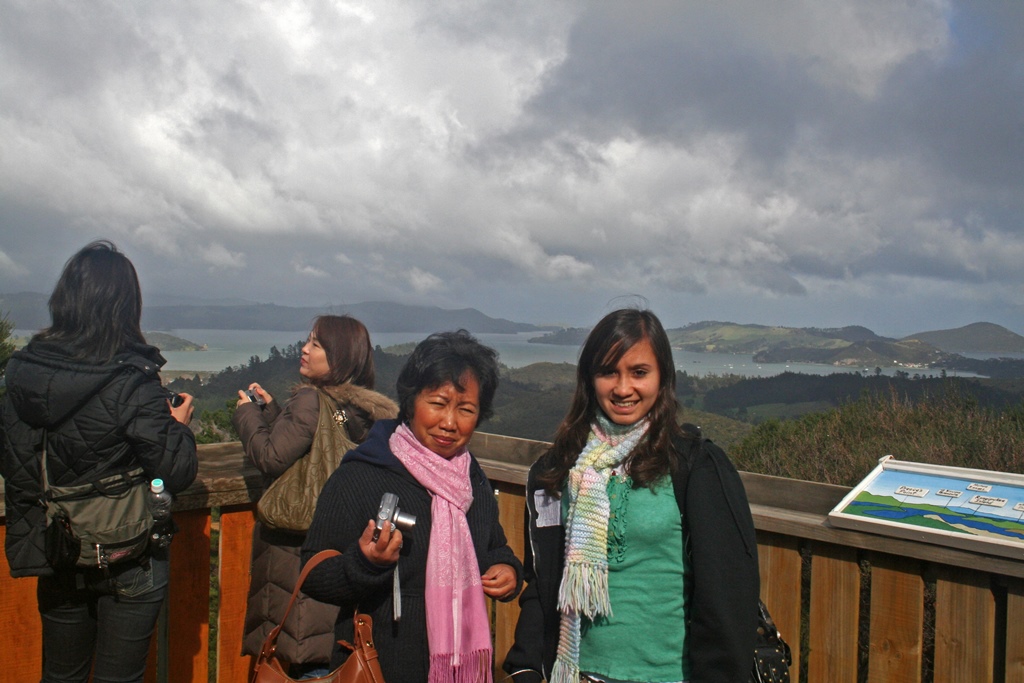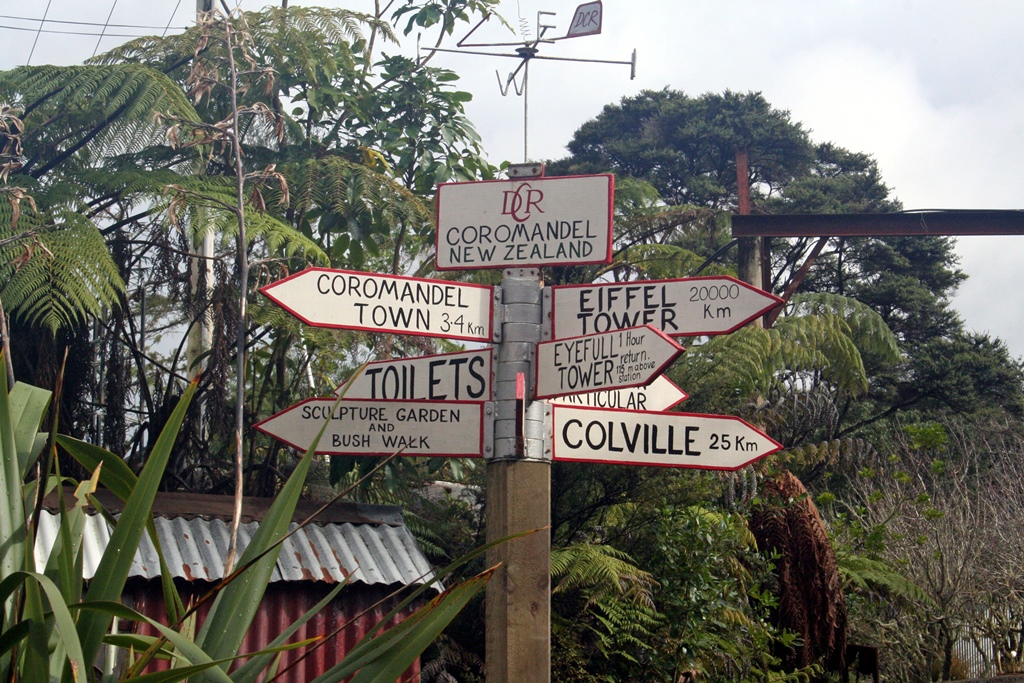The Driving Creek Railway is considered to be the top
tourist attraction on the Coromandel
Peninsula, and is certainly a unique New Zealand experience. It wasn't originally built
with tourists in mind, though. A professional potter named Barry Brickell bought the 60-acre
property in 1973, which at the time was mainly a scrubby hillside. In many places on the
hillside, though, natural clay deposits could be found which were perfect for use in
terracotta pottery. It so happened that Brickell also had an engineering background and
conceived the idea of building a private railway that could be used to move clay and wood
(for use in firing his kilns) from sources on the steep hillside to his workshop. This
turned out to be a very complicated project, involving surveying, earth moving, bridge and
tunnel building, and the laying of a great deal of narrow gauge (15-inch) track. Two small
diesel locomotives were also custom built in the workshop. As might be expected, all of
this was expensive, and loans were taken out to pay for it. But while a living can be made
creating and selling pottery, it apparently isn't a good enough living to be able to pay
for and maintain a private railway, so eventually the lenders, with an eye toward possibly
being repaid someday, strongly suggested that the railway be opened up for tours to a
paying public. Being the artist he was, one can imagine reluctance and skepticism on the
part of Brickell, but a passenger-carrying car was built that could be attached to an
existing locomotive, and the railway was opened for business in 1990.
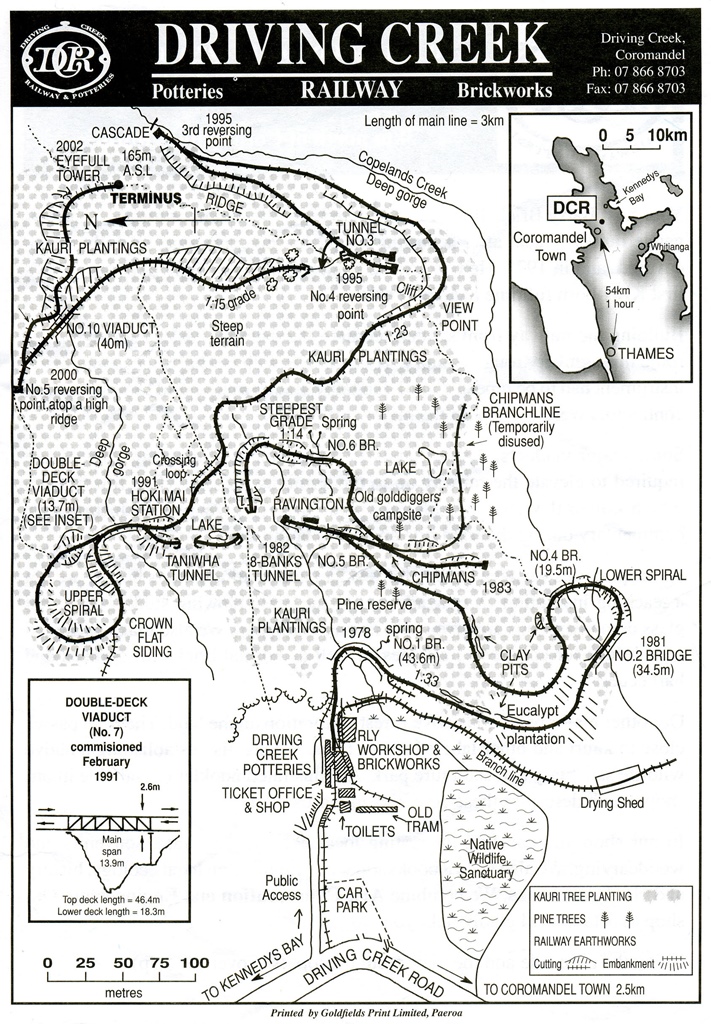
Railway Map
The rest, one might say, has been history. The track was extended to its current 2.6 km,
with additional tunnels and bridges (including a double-decker viaduct) being built. An
observation tower (called the "Eyefull Tower") was constructed at the upper end of the line.
Three new trains have been added for the sole purpose of carrying passengers. The trains are
all named for animals – the newer ones are called "Snake", "Possum" and "Linx"; the original
ones were called "Dieselmouse" and "Elephant". Tens of thousands of visitors ride the trains
each year. If you wish to ride, it's best to make a reservation (by phone or e-mail) in
advance. The railway's creator eventually warmed to the whole idea, greeting visitors
when he was around. On our visit he wasn't, having gone off to Wellington with a vanload of
pottery. Brickell died in 2016, at the age of 80.
Conservation was another passion of Mr. Brickell, and he planted kauri forest plants
on the property, starting in the 1970's. The wood he used for the kilns came from
faster-growing California pine trees, planted in the 19th Century by visiting gold miners or
descended from such trees (the first gold discovery in New Zealand was in the Driving Creek
area in 1852). Many native plants can be seen along the railway, with signs identifying them.
Development of a wildlife sanctuary was also underway during our visit, with a vermin-proof
fence (to keep out predators as small as mice) having been installed around the planned area.
It was hoped (among other things) that essentially defenseless kiwi birds could eventually
be reintroduced to something resembling a natural environment.
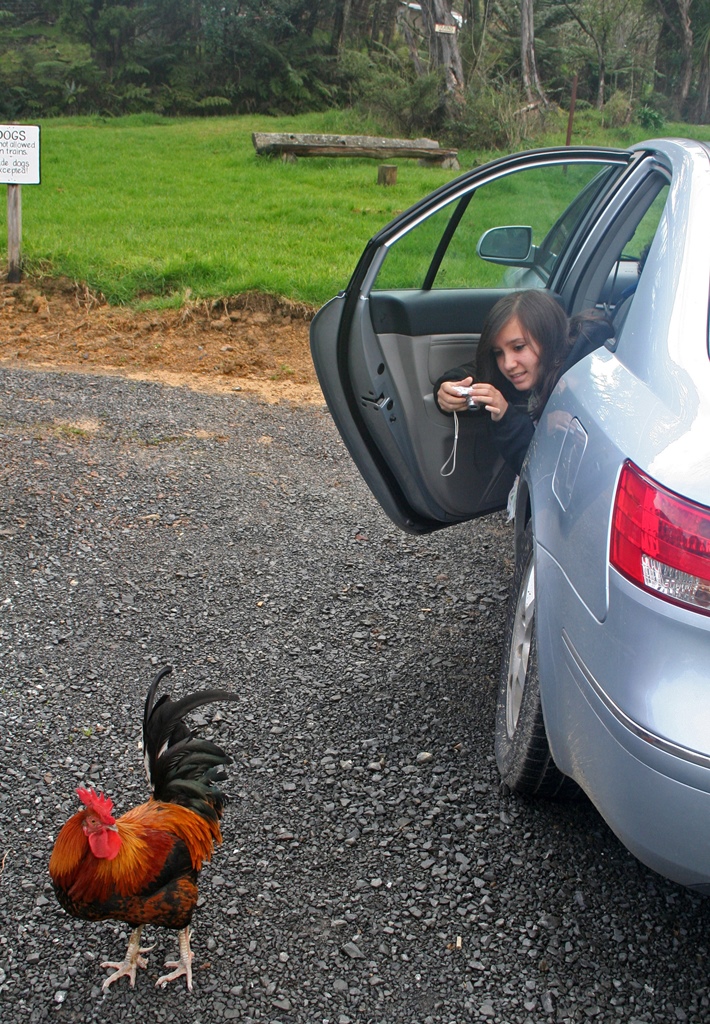
Welcomed by a Chicken?
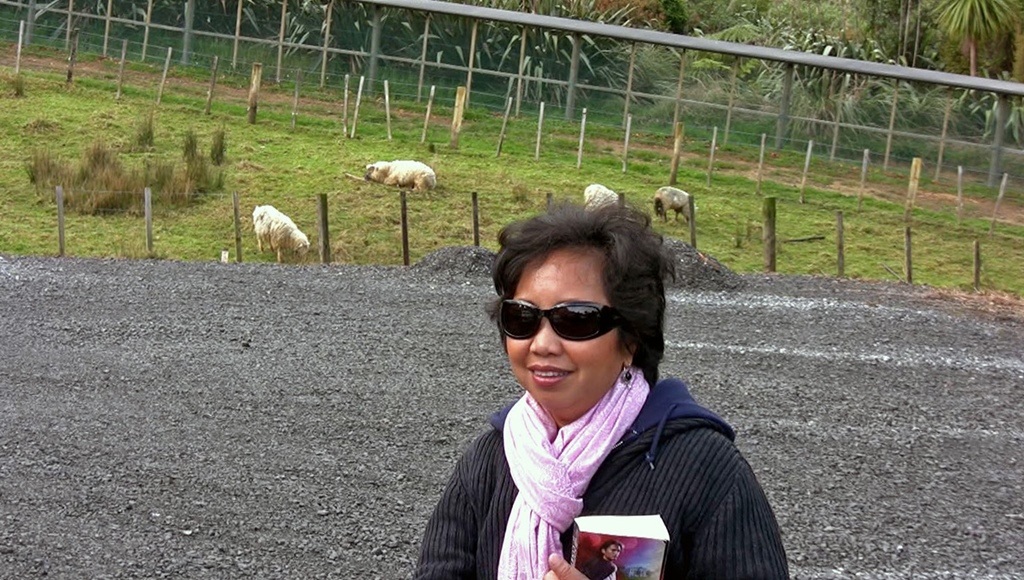
… and Sheep?
Our visit began with paying for our train tickets and boarding the "Linx" train at the appointed time.
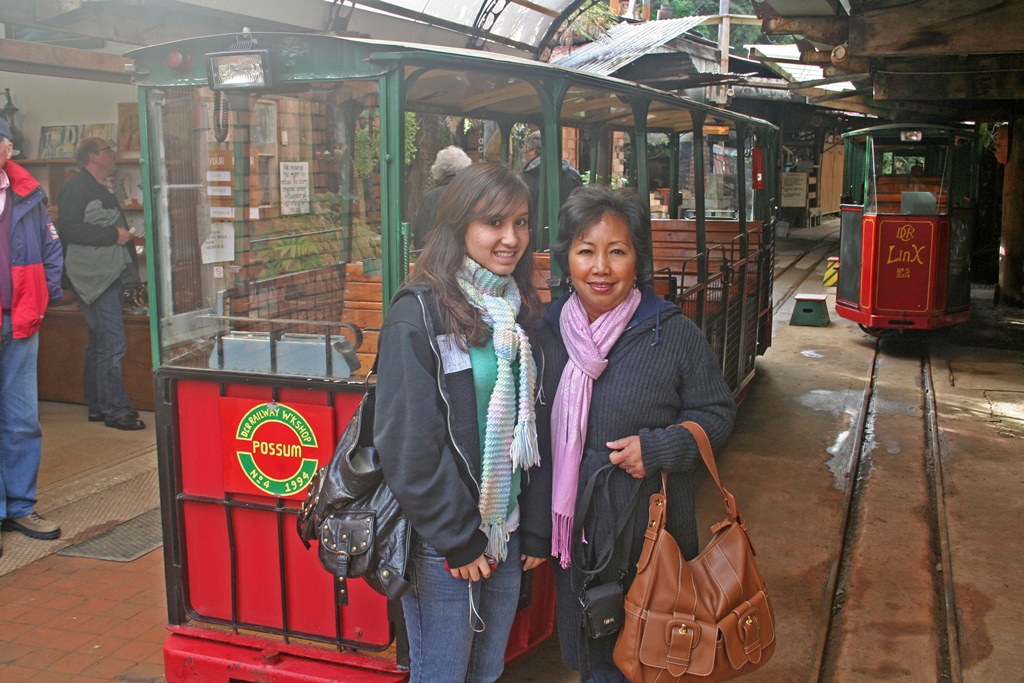
Connie and Nella with "Possum" and "Linx"
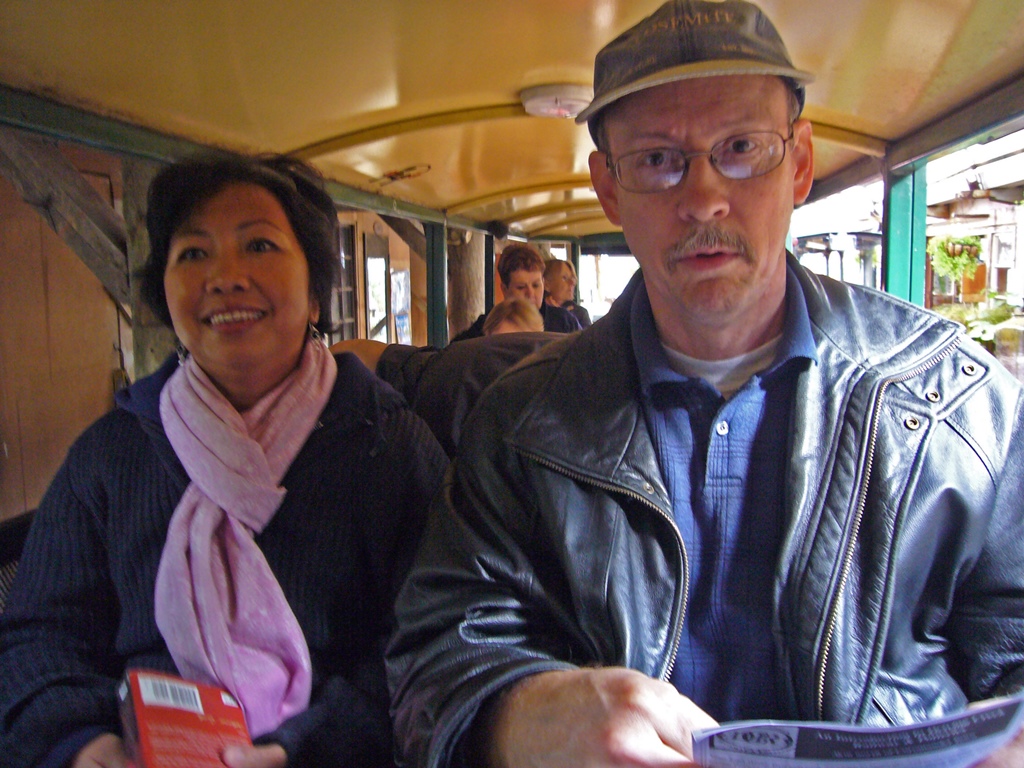
Nella and Bob Aboard "Linx"
The train moved past a workshop area and immediately entered forest. It also immediately
started to rain. There was a running commentary by the train's driver over a P.A. system,
but it was difficult to make out a lot of it because of noise made by the train and by the
weather.
Heading Out of the Station
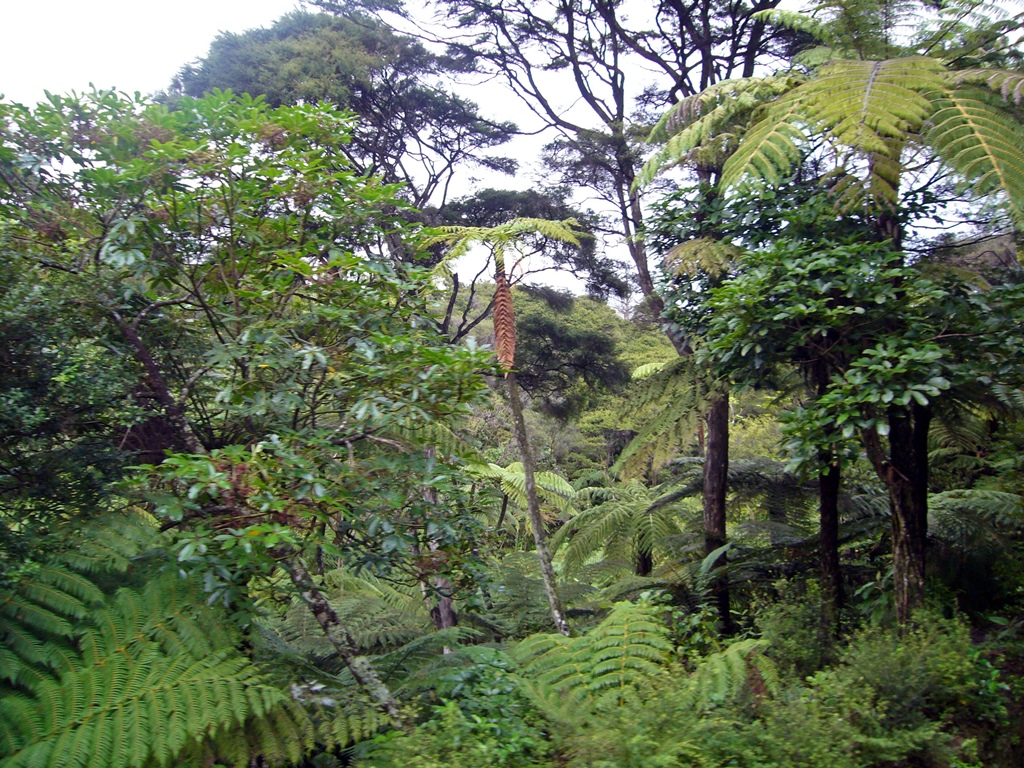
Rainforest

Tunnel and Bridge
Occasionally there were gaps in the forest through which some outstanding scenery was visible.
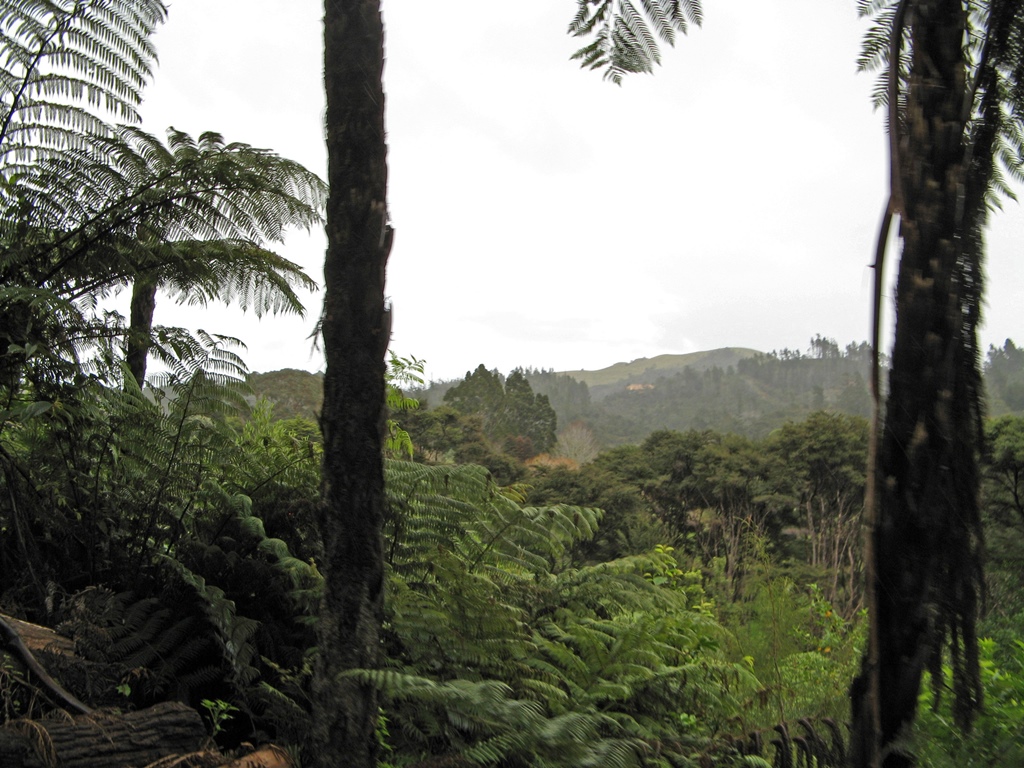
Landscape from Train
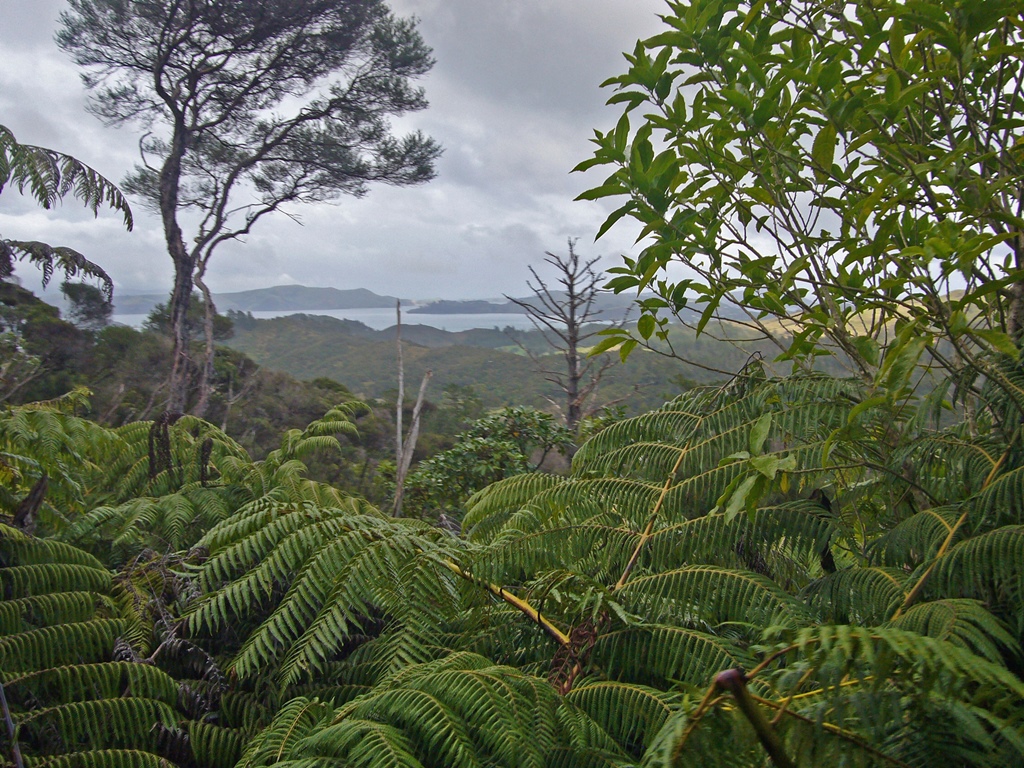
Coromandel Bay Through Bushes
Coromandel Bay from Train
There were also areas alongside the track with pottery displays or unique retaining walls.
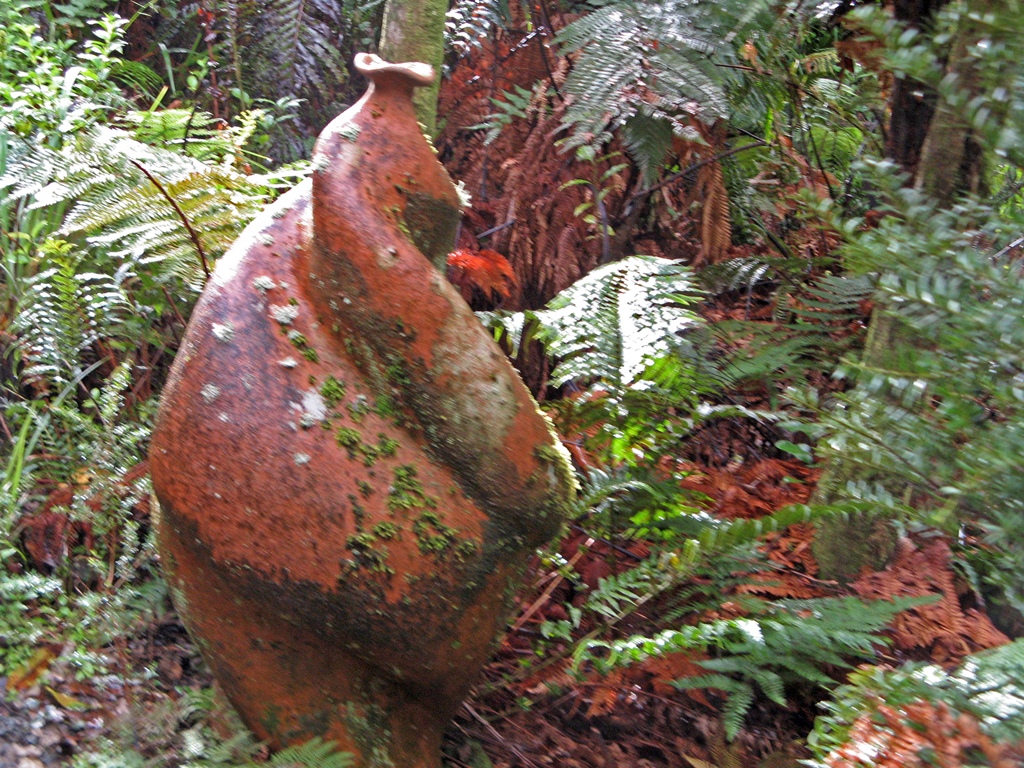
Pottery
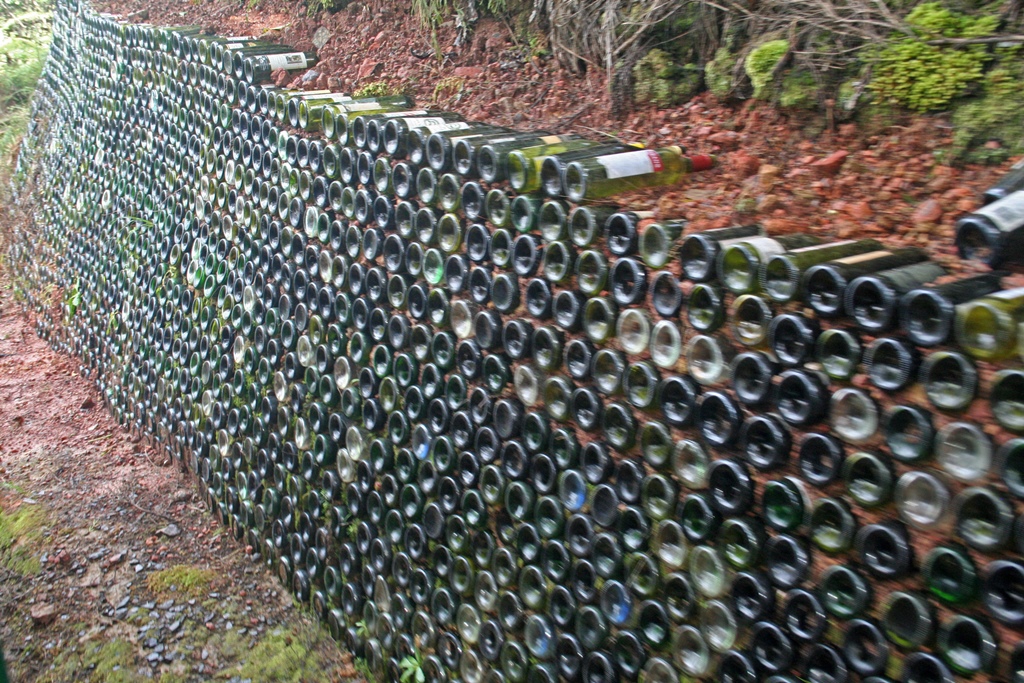
Bottle Wall
There were also several "reversing points" at locations where the train needed to switch
back more sharply than its turning radius would allow. At such points the driver would stop
the train, get out and walk to the other end of the train, and drive the train from that
end back the way it had come, except taking a fork in the track that went upward instead of
downward.

Reversing Point and No. 3 Tunnel
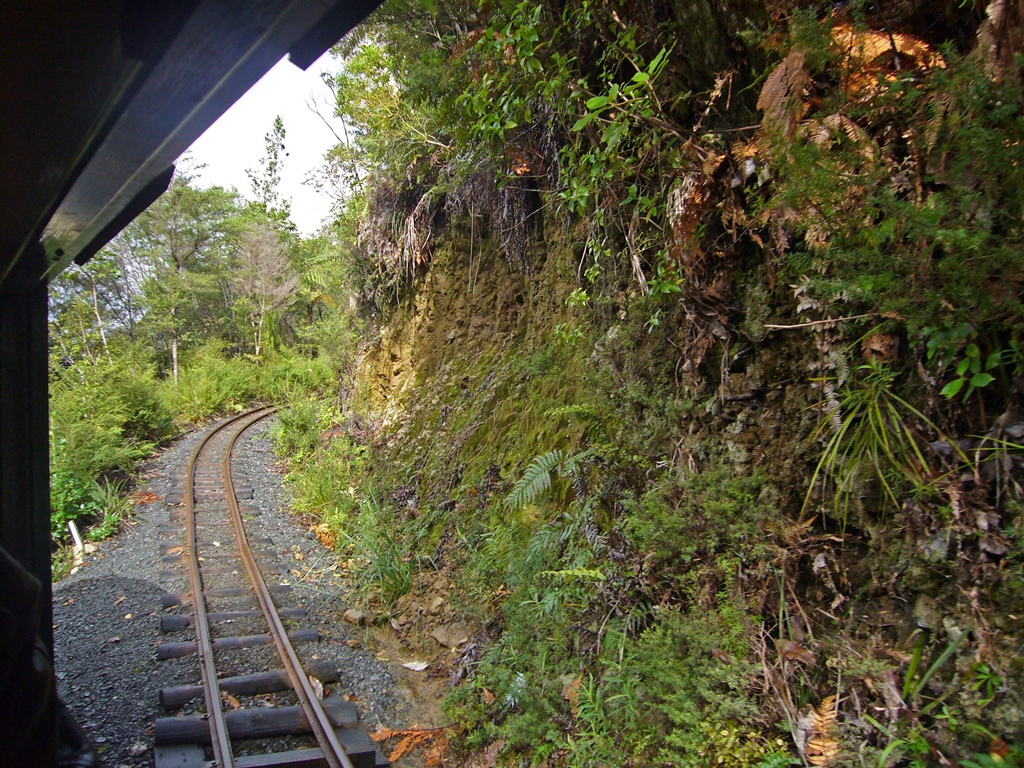
Track
Eventually we reached the Eyefull Tower, where the view of Coromandel Town and the Hauraki
Gulf was magnificent (and it had even stopped raining).
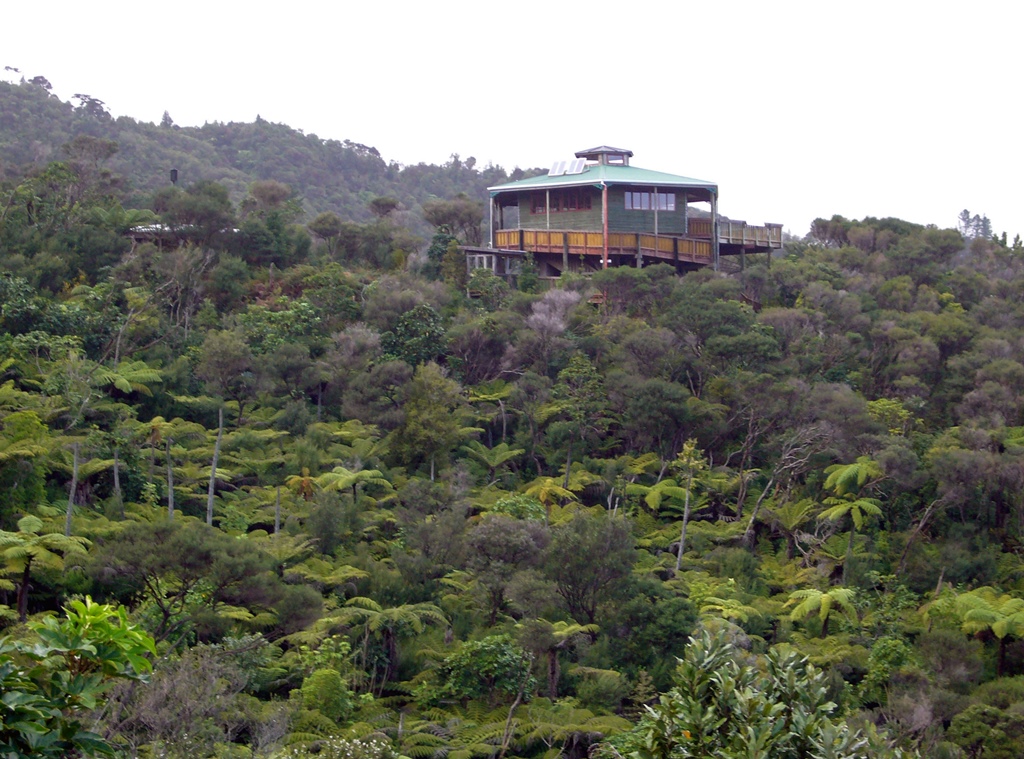
Eyefull Tower
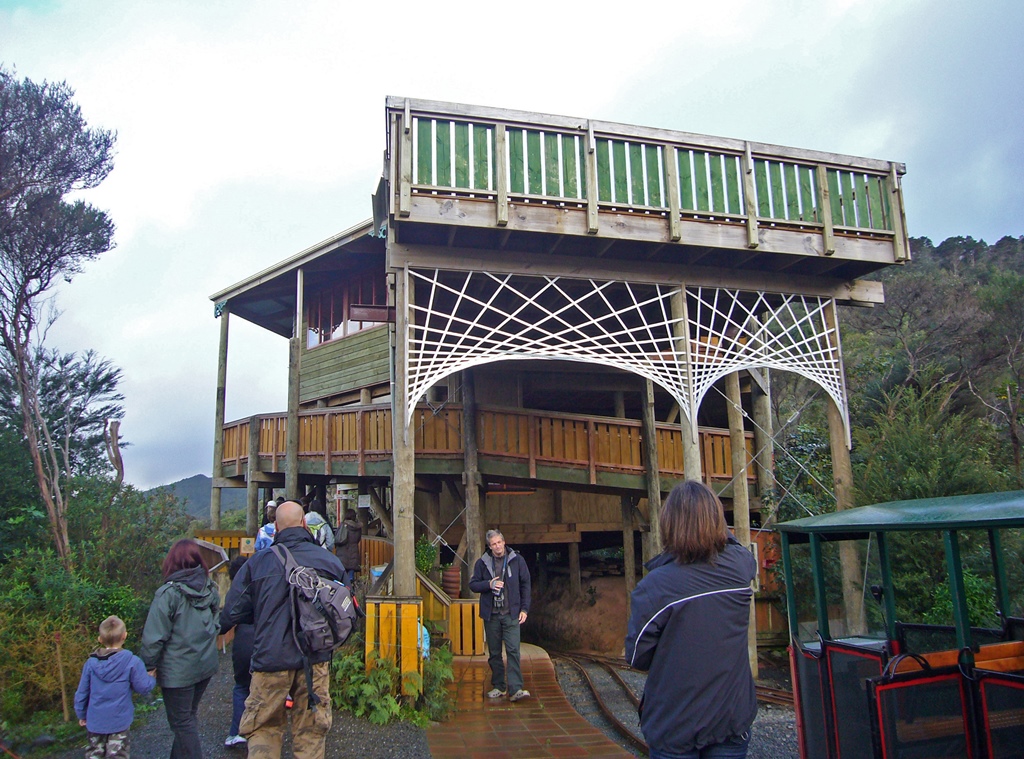
Eyefull Tower Station

Arrival at Eyefull Tower Station

"Linx" from Tower
The train driver gave us a talk pointing out some things and discussing the history of the
railway, as we gawked at the scenery.
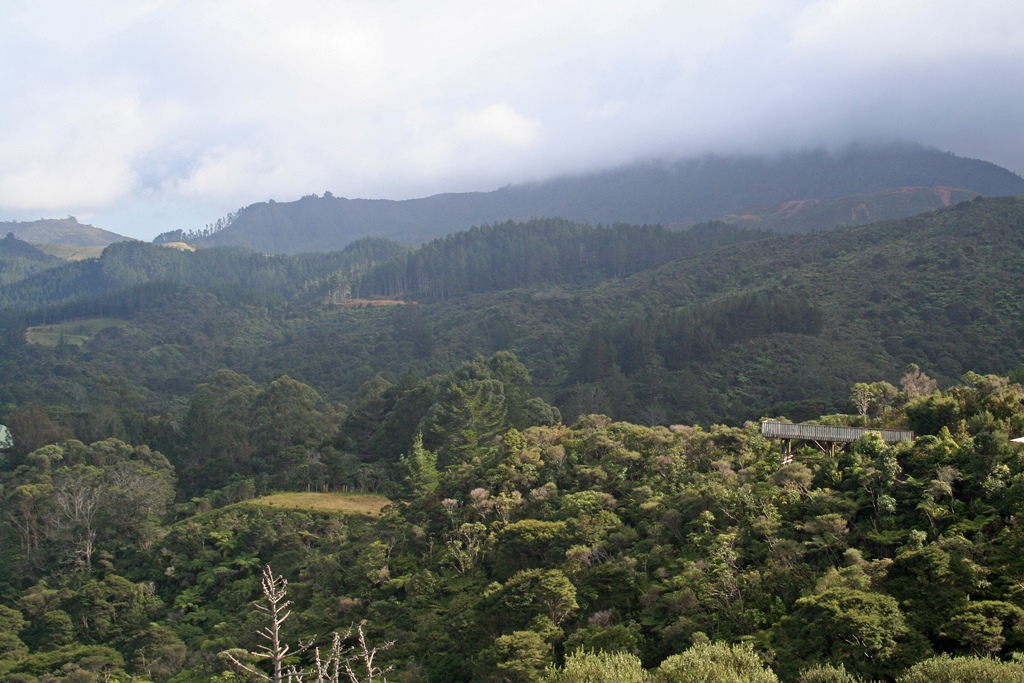
Hillside from Tower
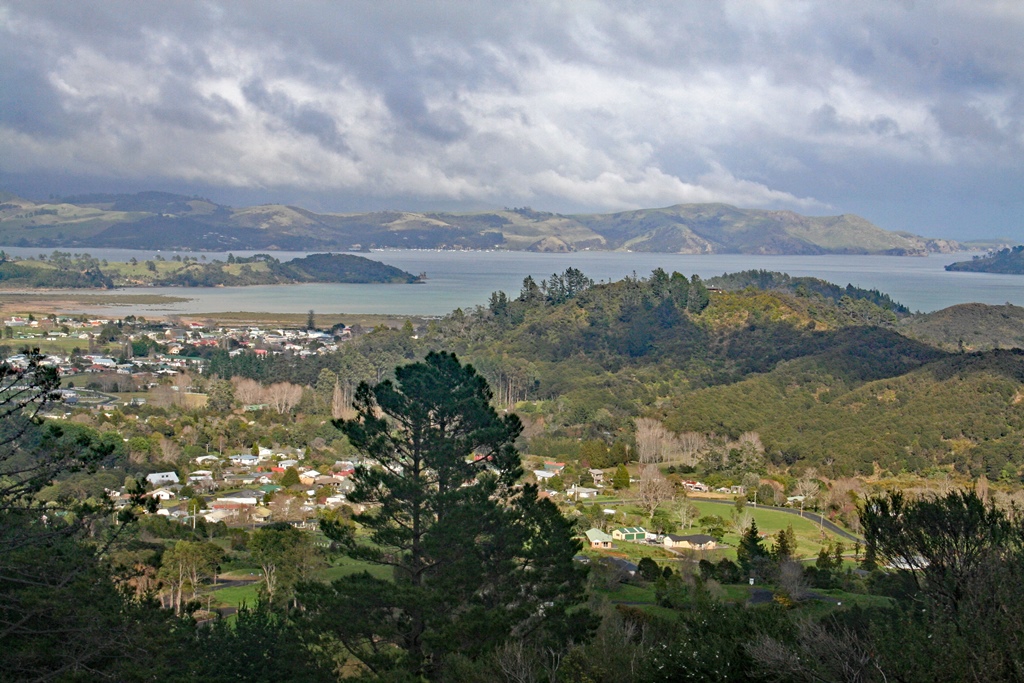
Valley and Bay from Tower
Nella and Connie with Coromandel Bay
We reboarded the train and returned back down the hill to where we started. At the bottom
there was a shop with pottery and glassware and a small sculpture garden, displaying some
of the larger pottery that had been created in the workshop.
Signpost at Station
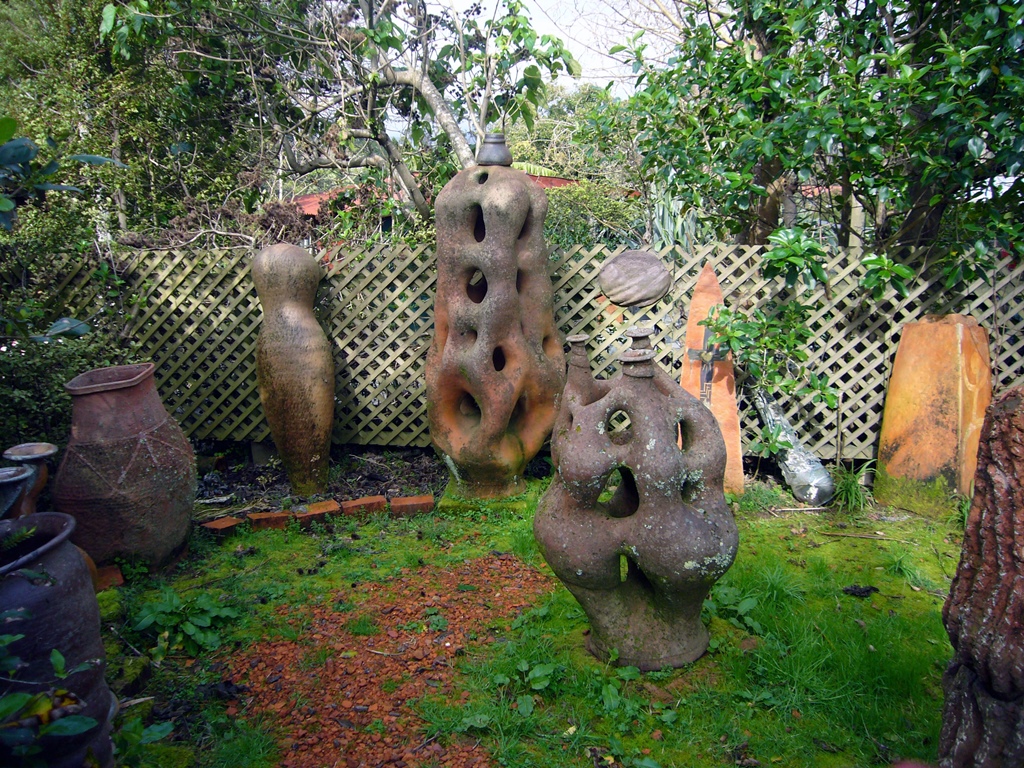
Sculpture Garden
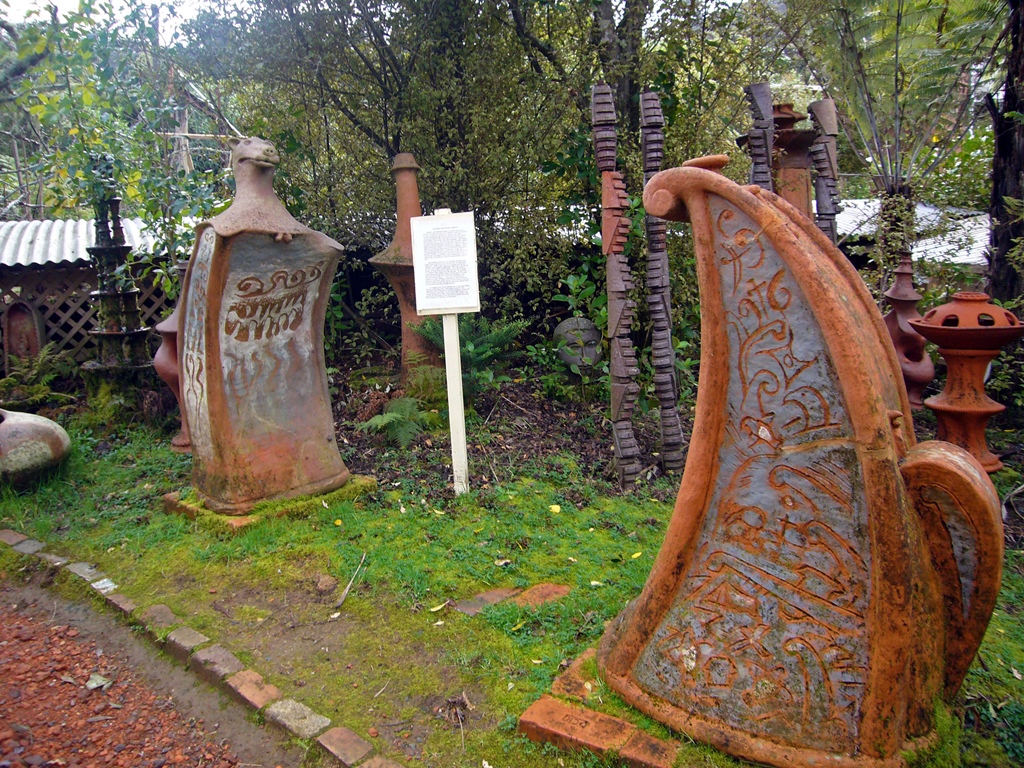
More Sculpture Garden
While we were in the sculpture garden, the rain began again, so we returned to the car and
set out to cross the peninsula to the east coast, heading for the town of Whitianga.






















